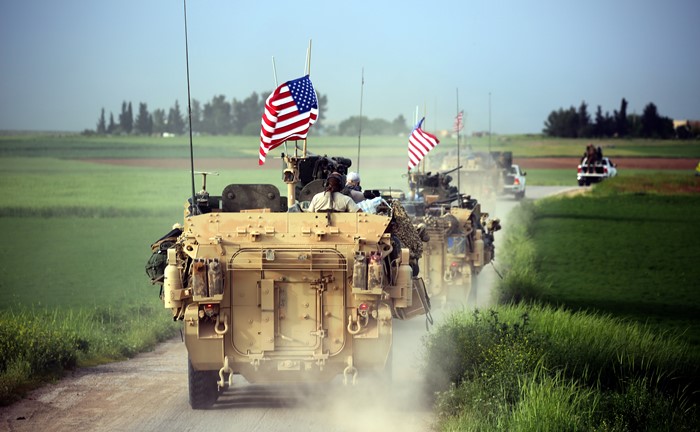Fatih Yurtsever*
Two terrorists affiliated with the outlawed Kurdistan Workers’ Party (PKK), considered a terrorist group by Turkey and much of the international community, on Oct. 1 carried out a suicide bombing in Ankara. Turkish Foreign Minister Hakan Fidan alleged the perpetrators of Sunday’s attack outside the interior ministry had been trained in Syria and warned of reprisals against Kurdish fighters in northeastern Syria. “It has become clear that the two terrorists came from Syria and were trained there,” Fidan said in televised comments. “From now on, all infrastructure, large facilities and energy facilities belonging to [armed Kurdish groups] in Iraq and Syria are legitimate targets for our security forces,” he added. “I recommend that third parties stay away from these facilities.”
The US State Department said it had no information to confirm Turkey’s claim. Mazloum Abdi, the commander of the US-backed Syrian Democratic Forces (SDF), the Kurds’ de facto army, denied Wednesday that Ankara’s attackers “passed through our region.”
During the operations, on Oct. 5, an ANKA-S UCAV operated by the Turkish National Intelligence Organization (MİT) was shot down by a US F-16 fighter jet after it was deemed a potential threat to American forces when it came within 500 meters of a “restricted operating zone” (ROZ) near Hasakah, about one kilometer (less than a mile) from American troops.
In the struggle between democracies and autocracies, which has become more pronounced with Russia’s invasion of Ukraine on Feb. 24, 2022, and in an environment in which NATO is again trying to maximize the understanding of unity and solidarity within itself with the mission of protecting the international rules-based order, the shooting down of a NATO member country’s UCAV by another NATO member country damages NATO’s image as well as Turkish-US relations. Therefore, it is necessary to find and analyze the answer to the following question: Why did Turkey send its armed drone within 500 meters of the US troops, and why did the US shoot down the Turkish drone?
One of the most important aspects of planning an air operation is developing and implementing a course of action to ensure that the identified targets are struck without compromising the safety of friendly forces in the area. Coordination among friendly forces is essential to this end. Procedures have been developed to prevent mutual interference between the armed forces of NATO member nations. If Turkey conducts an air operation in northern Syria, it must be aware of the location of US Special Forces in the region, their activities during the operation and the locations where they may be present, and take these into account in its planning. If a target in the vicinity of US troops is to be attacked during the operation, US authorities must be informed through the Turkish liaison officer at Incirlik Air Base or the Turkish liaison officer at the Office of Defense Cooperation (ODC) in Ankara. Pentagon spokesman Brig. Gen. Patrick S. Ryder told reporters that an ROZ had been declared in the area near Hasakah, where US troops are stationed. Such declarations are standard for US forces. Therefore, under normal circumstances, it is unlikely that a UCAV controlled by the Turkish Armed Forces (TSK) would enter the ROZ. However, after the downing of the UCAV, the Turkish Ministry of Defense stated that the downed UCAV did not belong to them, so it appears that MİT controlled the UCAV.
The more important point here is that when the US Special Forces saw the Turkish UCAV approaching the ROZ, they must have contacted the TSK Command Operations Center through CENTCOM and warned that the UCAV should not enter the ROZ. However, the fact that the UCAV did not change course and came within 500 meters of US troops indicates that there was a lack of coordination between the TSK and MİT, or that MİT did not inform the TSK of the UCAV’s movements. In any case, in such a large-scale air operation, the operation should be managed from a single center, and it is not a correct course of action in terms of military planning for MİT to participate in the operation as a separate element and independently engage targets with UCAVs under its control. Deploying a UCAV, particularly one under MİT control, near US troops likely serves a political agenda more than a military one. Before the May 14 parliamentary and presidential elections, the government of President Recep Tayyip Erdoğan wanted to launch a ground operation in northern Syria. Still, the plan could not be implemented because Russia and the United States did not give the green light for such an operation. Erdoğan consolidated his power after his re-election as president. His next goal is to replace the 1982 constitution with a new one. For this to happen, however, the debates on the articles of the new constitution must take place in a nationalist atmosphere within the framework set by President Erdoğan.
A ground operation in northern Syria might be Turkey’s strategy to foster nationalism. The government could use the excuse that the Turkish army is in Syria to ensure the security of Turkey and that the lack of economic stability is a result of this necessary action. Had the US not shot down the Turkish UCAV, the Erdoğan government would have taken it as a signal to proceed with the ground operation. However, the US made its red line clear by shooting down the UCAV. The Turkish Foreign Ministry statement — “During the operation, a UCAV was lost due to different technical assessments in the de-escalation mechanism operated with third parties. Necessary measures will be taken to ensure a more effective operation of the de-escalation mechanism with the relevant parties” — indicates that the Erdoğan administration has gotten the message about the US red line and will take steps to prevent similar incidents in the future.
* Fatih Yurtsever is a former naval officer in the Turkish Armed Forces. He is using a pseudonym out of security concerns.

